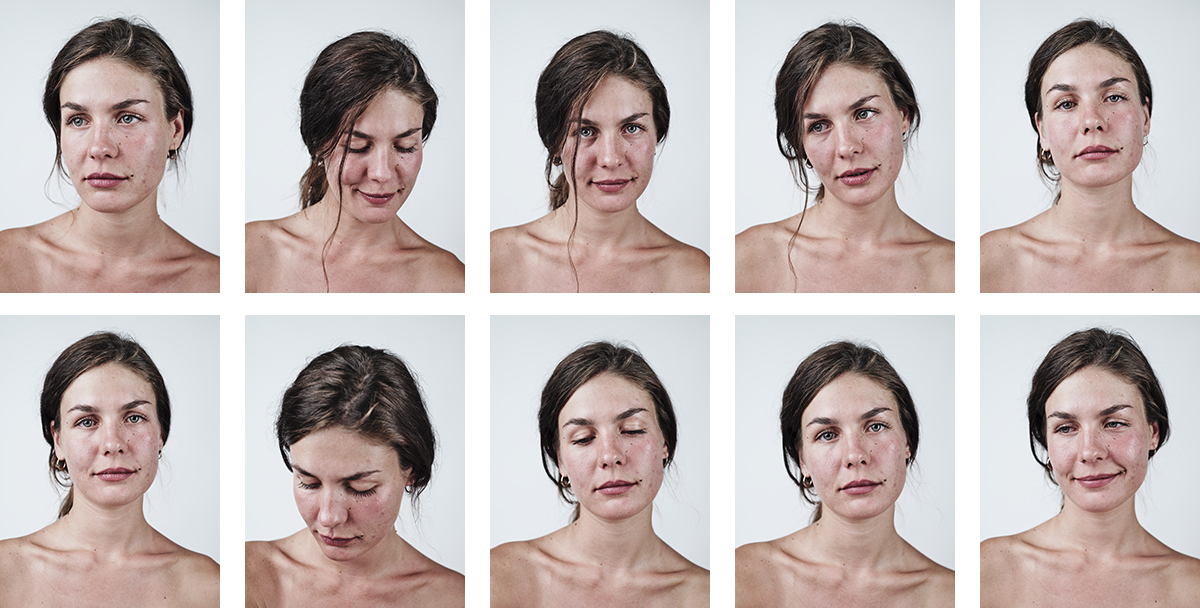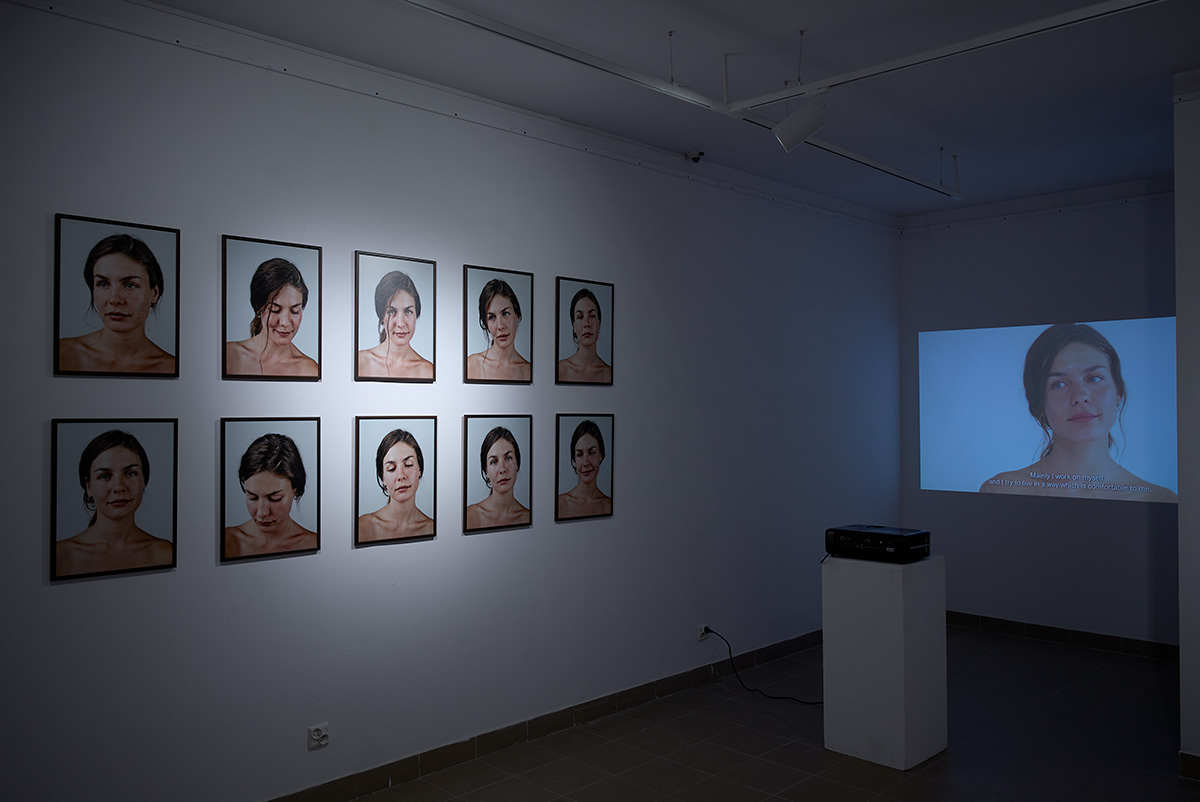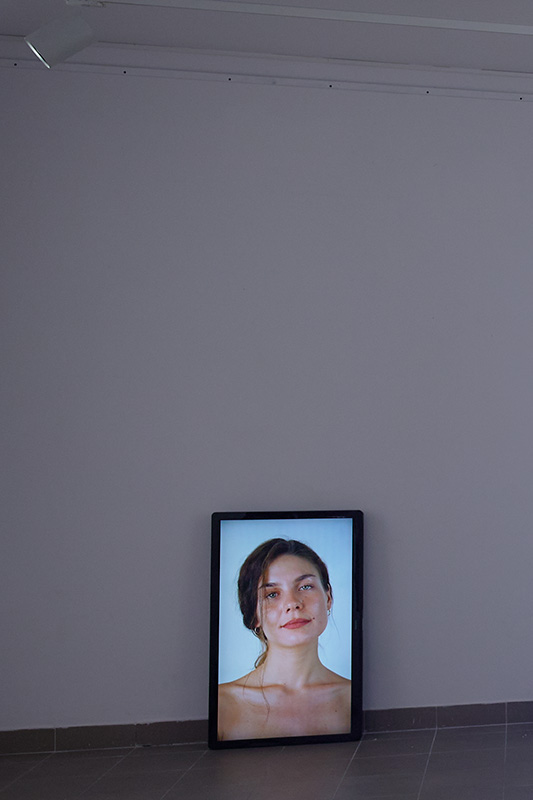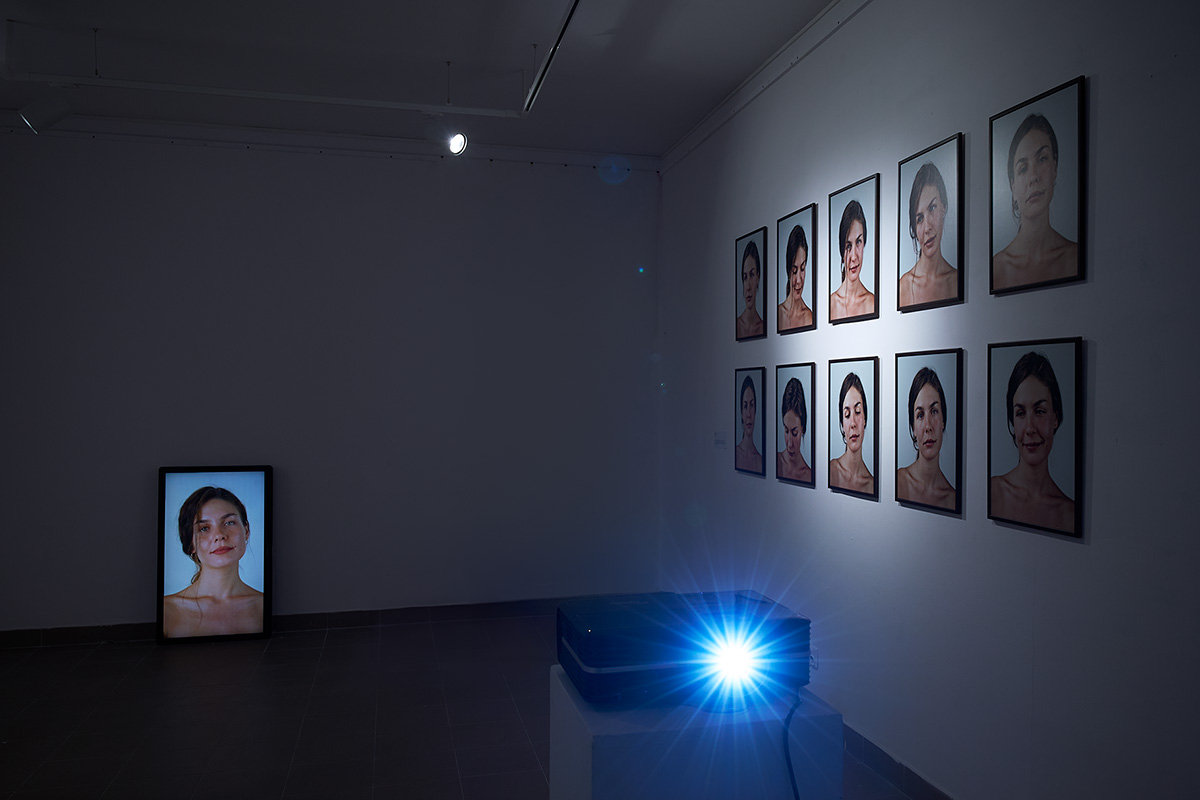„Habitus“
I don’t need to show the body to show nudity. It is enough to take a portrait of a naked person to capture their emotions associated with nudity.
Norbert Elias introduced the concept of habitus referring to the formation of habits in the process of social learning which constitute the second nature of the human being next to their innate dispositions. In the case of corporeality, such a relation means that the body image is not determined by nature or the instinct and drive sphere, but is by definition ‘civilised’, i.e. determined through processes associated with social control. Society exerts pressure on the individual to behave according to culturally accepted standards, and a failure to comply with the norms involves a threat of specific sanctions – exclusion or being given a stigmatising label, e.g. ‘weird’ or ‘abnormal’. As individuals, we are subjected to this pressure from an early age which results in the adoption of these external models of behaviour as an internal compulsion, i.e. the habitus of an individual.
The project aims at presenting the emotions associated with nudity and the way the body is perceived from individual and social perspectives, where it is an object of identity or a social object. It consists of ten portraits a model who has posed nude, a video, and an interview. The main idea behind the project was to confront the model with her nakedness and, to achieve this, I invited a person I did not know before to participate in it, and who was unaware of the concept before appearing at the studio. As soon as we met and started taking pictures, I presented her with a fait accompli: the requirement of posing nude. In this way, she could not mentally ‘prepare’ herself for this task, which in turn let me capture her true emotions related to the situation.
The silent 30-minute video is intended to give a sense of interaction with the model. The model, looking into the lens, is looking at the viewer. The maintained contact with the viewer enables the emotions of the model to be read, but is at the same time a challenge for both the model and the viewer, who, being aware of the situation, can in a way be considered an intruder.
Similarly to the manner of photographing, the interview was conducted spontaneously and was not directed – the model did not know the questions beforehand. This method was intended to help capture her immediate honest reflections, show truth, the first reaction. The project was a challenge both for the model and myself, as it put me in the role of an intruder violating a most intimate sphere, in a sense. The result of our cooperation demonstrates how much emotion can be shown while showing very little else.
What influence do we have on our own perception of the body, how much of it is individual and how much is socially shaped? How strongly do cultural models influence our ‘being’ in ourselves, how real are we in our bodies, how honest with ourselves? These are some of the questions I attempted to answer within this project.
“I tried to name and explain my emotions related to my participation in the Habitus project in the interview. It was not an easy task at all – to put hundreds of flighty thoughts into sensible sentences, while being aware that ‘someone’ was watching me, if not outright observing me (still, Borys’s presence was less stressful than the camera lens staring at me relentlessly). Another challenge was watching the footage of myself later – looking at myself from a completely different perspective and through a new lens. In a way, that was just as confronting as giving the interview. I still find the project itself and my participation in it very inspiring. Since the dawn of time, the human body has been portrayed in art, it has been the main object of interest for artists: something simple, basic and yet most beautiful that every human being knows and can relate to. Personally, I feel that the aim of the project was to make the viewer – as well as myself – gradually confront their own prejudices and fears. The project encourages the recipient to reflect on how conventions and social norms distort our well-being in our own bodies, even though the body is something indispensable, the simplest and purest thing, and it is impossible to separate our existence here from the fact of having a body, of being in the body. The project is a kind of experiment, a psychological analysis – it can make you reflect on the social condemnation of the body and nakedness, on the impact of this contempt on the decline of your well-being. This social censure is multifaceted: the association of nudity solely with promiscuity, ‘indecency’; shame instilled from childhood; aesthetic criticism; comparisons of our bodies to current beauty canons, and even to the stereotypes of body display by, for example, celebrities. I feel that my participation in the project was also an opportunity for me to look within myself, an attempt to liberate myself from the feeling of being judged, and an opportunity to awaken an inner sense of liking and acceptance of being in my own body with pride and confidence. In a safe, although absolutely unexpected way for me, we leaned over the body, looked at it from a different perspective. Afterwards, a quote from Walt Whitman’s poem came to me: ‘[…] we sang the body electric’.”
Michalina Marianna Głogowska
HABITUS in Forum Gallery / Toruń, Polska 2024
HABITUS in Forum Gallery / Toruń, Polska 2024
HABITUS in Forum Gallery / Toruń, Polska 2024



